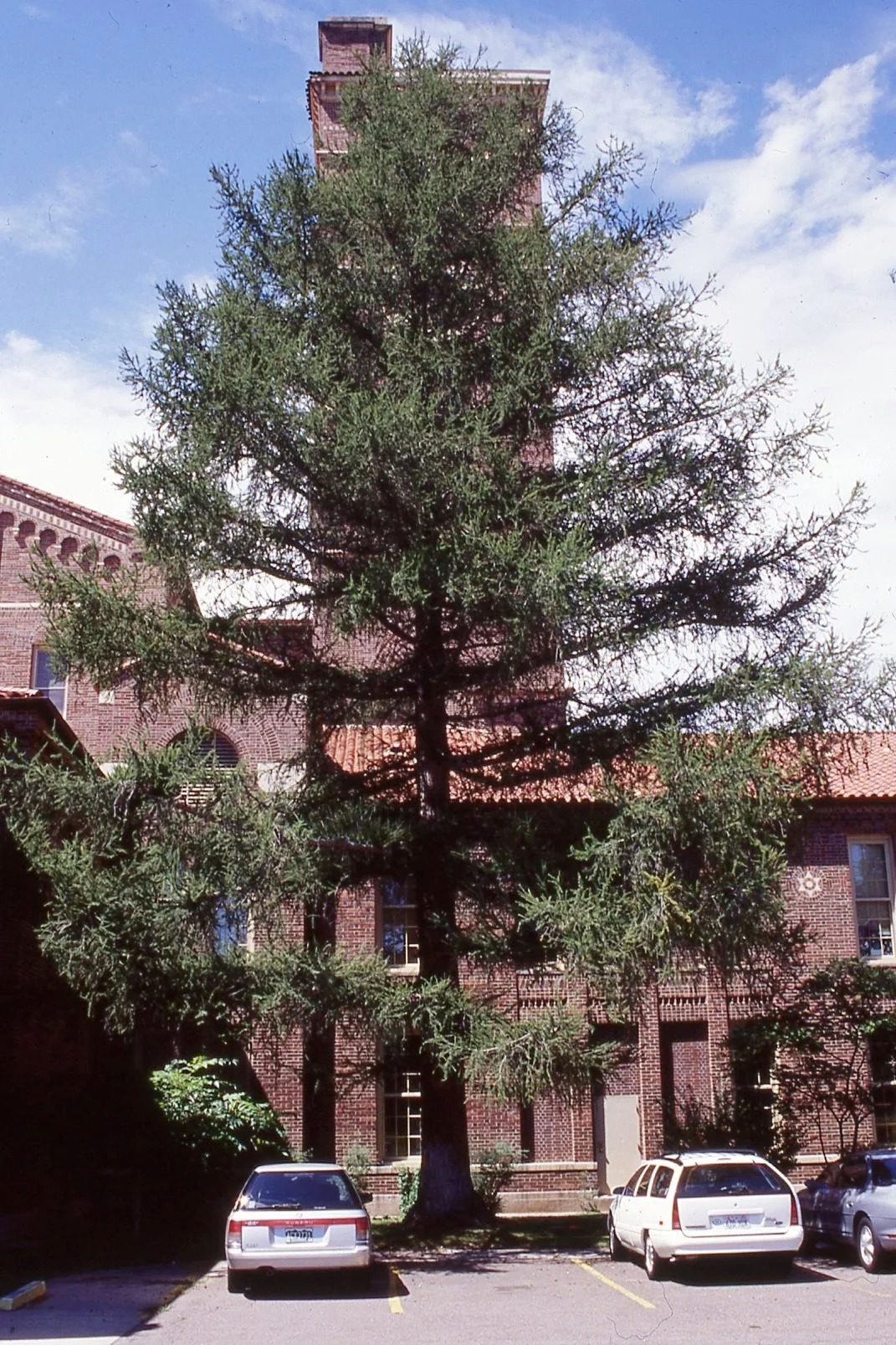European larch (Larix decidua)
Second place champion European larch in Denver at South High School.
Species info:
Leaves: Alternate, simple, oblong with 5–7 rounded lobes and deep sinuses; margins entire or shallowly notched. Upper surface dark green and glossy; underside paler and softly hairy.
Leaflets: None (simple leaf).
Leaf Surface: Shiny and smooth above; pubescent and lighter below.
Bark: Gray and scaly on younger stems; becomes rough and deeply furrowed on mature trunks.
Flowers: Inconspicuous; separate male and female catkins on the same plant (monoecious).
Fruit: Acorns 0.9–1.8 cm long, short-stalked, set one-third to halfway into a rough-scaled cup.
Botanical: Quercus gambelii
Family: Fagaceae
Mature Height: 60–70+ feet in Colorado; some specimens exceed 70 feet
Canopy Spread: 25–45 feet at maturity
Foliage Type: Deciduous conifer
Tree Shape: Gracefully pyramidal with drooping branchlets when young; becoming more open and rigid with age
Growth Rate: Fast; up to 2 feet per year in favorable conditions
Flowers: Inconspicuous
Fruit: Cones
Fall Color: Bright yellow to orange *leaves are deciduous
Water Use: Moderate to high
Hardiness: Zones 3A–6; very cold-hardy
Soil Preference: Prefers acidic, well-drained, established soils; struggles in highly alkaline or compacted soils
Sun Exposure: Full sun, but requires cooler microclimates; avoid reflective heat
Wildlife Value: Provides cover and habitat; cones offer limited food value for small wildlife
Pests/Pathogens: No significant pests or diseases observed in Colorado
Planting Recommendations: Recommended for some sites along the Front Range in areas where it is protected from heat; nursery scarcity is limiting
Information Sources:
Front Range Tree Recommendation List
Michael A. Dirr. Dirr’s Encyclopedia of Trees and Shrubs. Timber Press. 2011.
Michael Dirr, Manual of Woody Landscape Plants (University of Georgia, 1990)
Michael Dirr, Dirr’s Hardy Trees and Shrubs (1997)
Edward F. Gilman, Trees for the Urban and Suburban Landscapes (1997)
Botanica’s Trees & Shrubs (Botanica, 1999)


